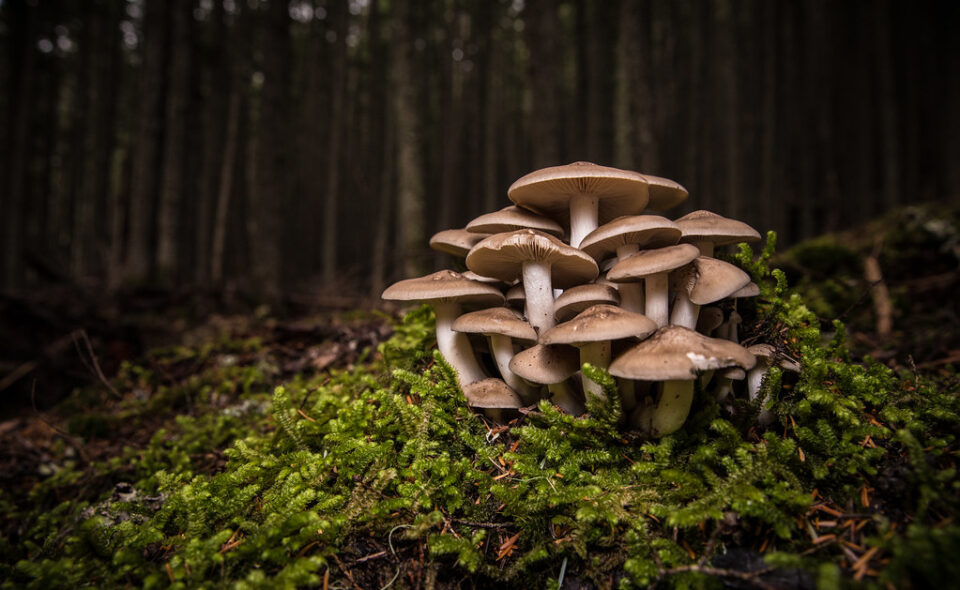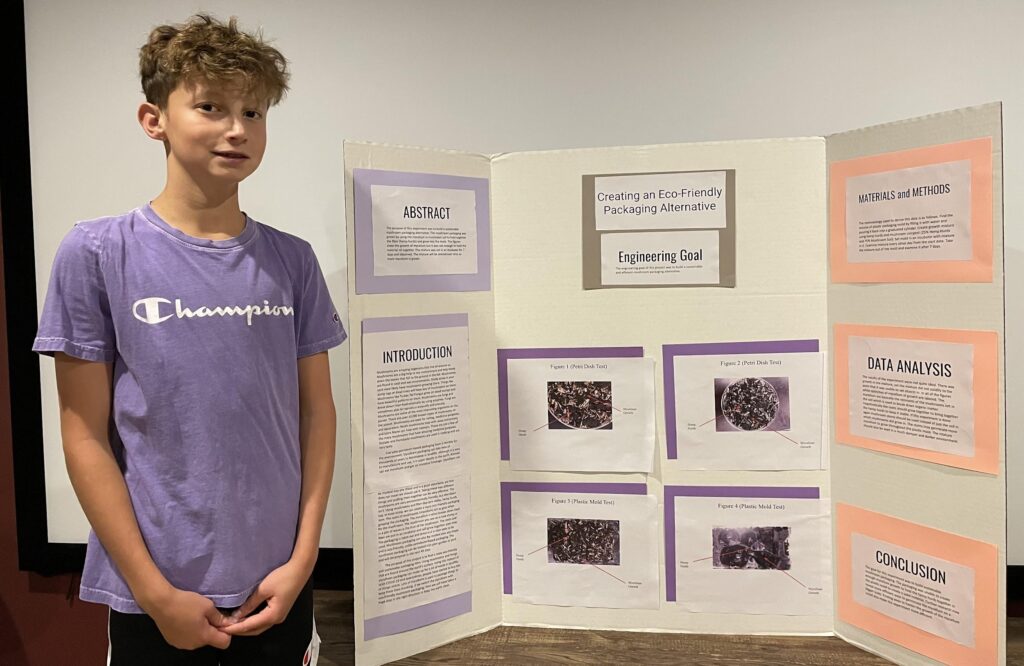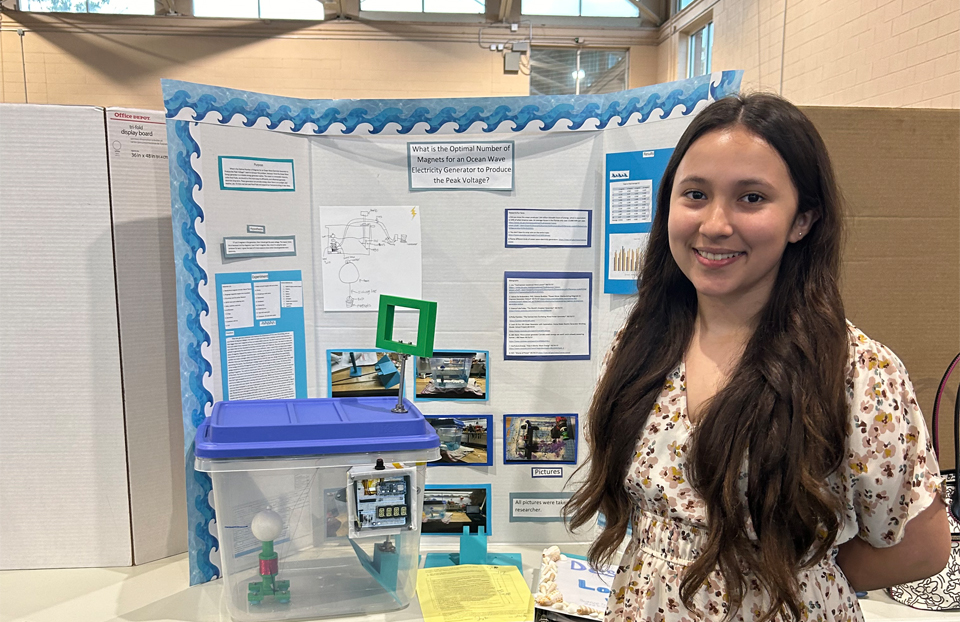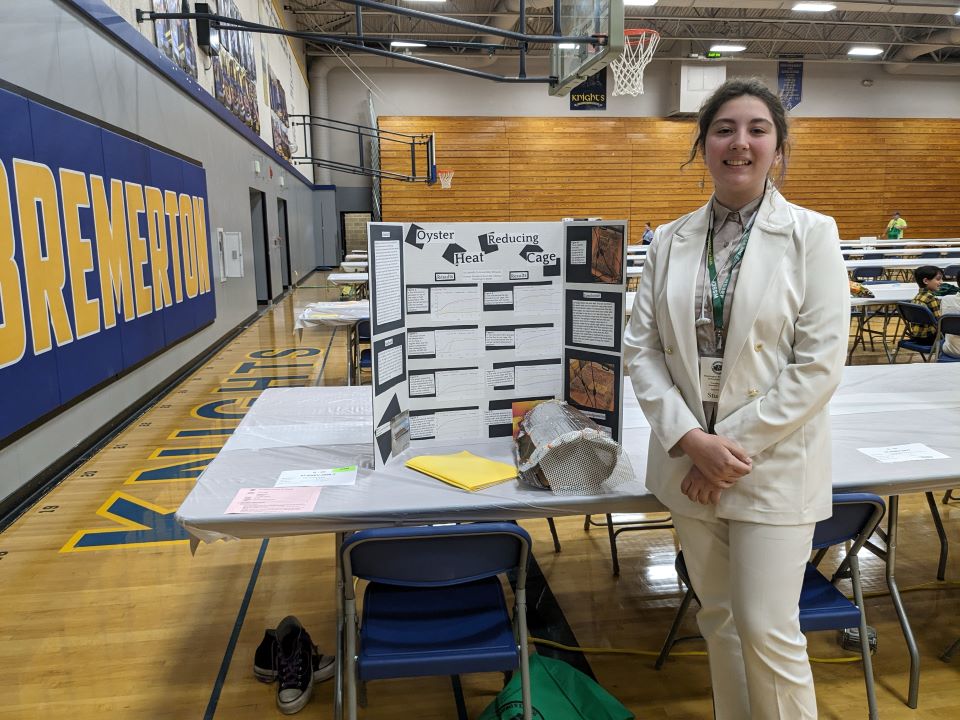Fungi could be the next eco-friendly packaging

For the fourth year, The Lemelson Foundation is giving $100 awards to outstanding young inventors in Society Affiliate Fairs with middle school participants around the country. The prize was especially created to reward young inventors whose projects exemplify the ideals of inventive thinking by identifying challenges in their communities and creating solutions that will improve lives.
Styrofoam and other packaging materials are said to make up around one third of the waste in landfills, according to Recycling Revolution, and it takes more than 500 years for Styrofoam to decompose. While alternative materials like recycled paper and corn plastic products have become common replacements to Styrofoam, demand for more eco-friendly packaging continues. The next packaging solution could be closer than you think.
A fascination with fungi led 8th grader Finnegan Miller to ask the question, could mushrooms be used to create compostable packaging? “Mushrooms are one of the most fascinating phenomena of nature,” says Finnegan. “Their microscopic and intertwined ‘root systems’ are sturdy, yet still soft, making them perfect for an eco-friendly packaging alternative.” Finnegan’s project focused on creating a package made of mushrooms that a user could toss into their yard or compost, allowing the package to decompose in two to three weeks.

Finnegan’s goal is to create a product that could replace Styrofoam and petroleum-based products. Taking inspiration from mushroom mycelium, a mushroom’s root system, he set to work creating a packaging design and a mixture of mycelium that would create a sturdy package. Finnegan utilized mushroom soil to begin the growing process, as it already contained mushroom mycelium and used an incubator covered in black construction paper to minimize light and encourage growth. Despite these measures, Finnegan says so far, his project hasn’t been a success.
“My project failed due to the concentration of mushroom spores that germinated being too few. The spores that grew from the mushroom mycelium in the soil were supposed to grow and hold the fiber and soil together,” he explained. “It did grow, but not to the point in which I was looking for. The packaging barely held together when taken out of the mold and was not strong enough to use.” This setback hasn’t deterred Finnegan from making the next eco-friendly packaging product.
He says he plans to continue working on his project until it is successful. “Though my project failed I am thrilled by the results I found,” he says. “I look forward to studying mushrooms to improve my packaging to the point of using it to send a package in the mail.”
Finnegan says the money he received for winning the Lemelson Early Inventor Prize will help him achieve that goal. “I am truly grateful for the opportunity. Receiving the Lemelson Early Inventor Prize made me very happy. I enjoyed being recognized for the work I put in for the science fair.”


